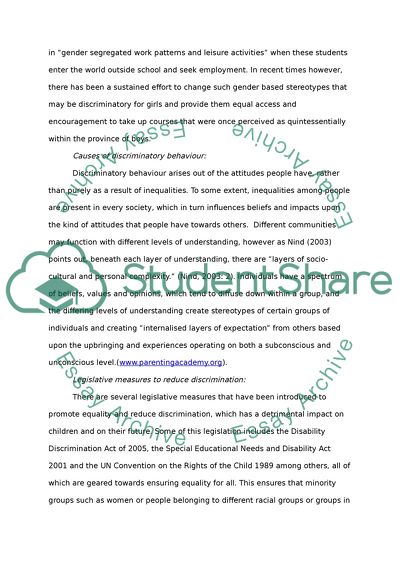Cite this document
(Discriminatory and Non-Discriminatory Practice Essay, n.d.)
Discriminatory and Non-Discriminatory Practice Essay. https://studentshare.org/education/1731628-meeting-childrens-needs-through-non-discriminatory-practice
Discriminatory and Non-Discriminatory Practice Essay. https://studentshare.org/education/1731628-meeting-childrens-needs-through-non-discriminatory-practice
(Discriminatory and Non-Discriminatory Practice Essay)
Discriminatory and Non-Discriminatory Practice Essay. https://studentshare.org/education/1731628-meeting-childrens-needs-through-non-discriminatory-practice.
Discriminatory and Non-Discriminatory Practice Essay. https://studentshare.org/education/1731628-meeting-childrens-needs-through-non-discriminatory-practice.
“Discriminatory and Non-Discriminatory Practice Essay”. https://studentshare.org/education/1731628-meeting-childrens-needs-through-non-discriminatory-practice.


